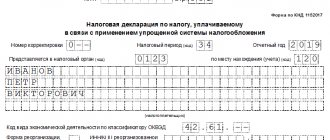Main purpose
It is always drawn up in cases where a document is moved both outside the company and within it. In this case, the term should be understood not only as a list of a certain number of papers, but also as one document. It is important to understand that, in essence, any movement involves drawing up an inventory that performs several functions at once:
- First of all, this is the main document that confirms the fact of sending and transmitting 1 or several documents from a specific sender to a specific addressee.
- Allows you to quickly track current document flow and detect the movement of a particular paper.
- Finally, thanks to it it is possible to draw conclusions about internal logistics - i.e. how exactly the document flow goes, in what directions, on what days, and to what points. Thanks to this, it is possible to optimize delivery processes within the company, which will save a significant amount of resources.
Inventory of documents sample 2020
The preparation of the letterhead is at the discretion of the company. Usually it is developed in the company's accounting policy, and its sample is approved for all cases of transfer of documents.
A standard form template includes the following sections:
- Addressee's name – i.e. a company, a representative of a government body or a private person to whose address a set of documents is transferred.
- The name of the organization that transfers the documents.
- Date of preparation.
- A table with the inventory itself, which indicates:
- serial number;
- full title of the document;
- number of copies;
- number of sheets.
- Next, a line is usually written about how many sheets of documents were transferred.
- This is followed by the signature of the person responsible for the transfer, as well as a note on acceptance of the documents indicating the full name, position of the accepting employee and the date of acceptance.
If necessary, you can also additionally write in what form the documents are being transferred - original or copy (certified or not certified).
The document is drawn up in 2 copies - one remains with the sender, and the other is transferred to the addressee. If necessary, you can make 1 more copy, which will be transferred for safekeeping to the administration, accounting department and other interested employees.
NOTE. The number of sheets in the table is indicated immediately for all copies of documents - i.e. common to each document. All lines that are left empty in the table are crossed out with a pen.
An option for compiling in a specialized program is shown in the video:
The essence and purpose of the document
In the activities of any subject, there is an innumerable variety of different forms, types, forms of papers, without which the implementation of this very activity is not possible.
All this documentation has to be stored, and for quite a long time. The safety of papers in most cases is entrusted to a special structural department of the enterprise - the archive. Moreover, transferring forms and forms to the archives department for safekeeping is a whole ritual, which must also be documented with the appropriate documents.
The main form that is drawn up when accepting and transmitting papers is an inventory. A special form of the list, which names all types of documents transferred from one department to another or from one official to another. The key purpose is to organize order in the recording of documentation and ensure prompt search for the necessary information.
Main varieties
Different companies have their own forms and approved samples of document inventories, which are compiled according to uniform rules. Depending on the purpose of documents, several groups are distinguished:
- Internal - for transferring a set of papers within one enterprise, department, branch or between different branches, structural divisions of a large company.
- Inventory for the transfer of documents to third-party companies - these templates can be developed taking into account other considerations, depending on what additional information should be provided to counterparties, representatives of the tax service, and other government departments.
The most extensive classification is related to what documents are described for transfer to another company or for internal use. For example:
- Inventory of the certification case.
- Inventory of primary accounting documents.
- Personal files of employees and many others.
Finally, a separate category is the delivery inventory of cases, a sample of which is given in the corresponding section. This document is drawn up in cases where papers are submitted to the archives.
Is an internal inventory of a personal file required?
Legislative acts and regulations do not mention the obligation to maintain an inventory of documents included in personal files.
It is mentioned only in the Rules for the Operation of Archives of Organizations. In this part (document preparation), they are mandatory only for government organizations; for all other employers these are only recommendations.
Therefore, enterprises independently decide whether to keep an inventory of documents. This is enshrined in accounting policies or other local regulations.
Maintaining an inventory for each personal item allows you to control the composition of the documentation contained in them and protect it from unauthorized removal. You can begin to create an inventory when filling out your personal file, or you can draw it up immediately before sending the papers to the archive.
How to compose correctly
A case inventory is one of the most common types. It is compiled according to certain rules. The following points are indicated:
- Document serial number - this means that in a personal file or other folder that groups files, each document is always numbered with a unique digital or alphanumeric combination.
- Index – in some cases, the document is also assigned its own unique index. This is especially true when one case contains a very large number of papers, so along with the number, a letter combination is written down, which allows you to quickly find it in the general list. If there is no index, the mark “without index” or “b/n” is put.
- Date – here we do not mean the date the document was drawn up, but the date of its registration. Sometimes these indicators do not match, so they should be checked in advance to avoid discrepancies later.
- The title of the document is always drawn up in such a way that by its name one can easily determine not only the essence, but also its belonging to a certain category of cases or section of office work.
- Sheet numbers are usually placed at the top and in the center, but are always at the discretion of the organization. For convenience, the company’s accounting policy always makes an initial decision, according to which all documents, including their pages, are drawn up.
- Notes are an optional, but quite common section in which the responsible person can add his comments regarding the movement of documentation or case folders. For example, the file was archived or the document was seized for transfer to a counterparty (or, conversely, returned), etc.
- The final mark is a record that reflects the total number of documents, pages, copies, types (originals, certified and uncertified copies). It is provided for convenience so that the required papers can be found immediately.
Inventory of documents: rules of use and execution
It's no secret that enterprises and government bodies are required by law to preserve documents regarding their activities for a certain period.
But such documents are not allowed to be simply stored in the archive. Before sending them, an inventory must be completed.
What is an inventory and what legislation is it regulated by?
According to the law, the inventory of documents is the final stage of document processing. The inventory is compiled in a special directory, the form of which is approved by the government.
The inventory lists individual numbers, their composition and the contents of all files that need to be sent to the archive.
The procedure for inventorying documents is carried out on the basis of the following instructions:
- Methodological recommendations for office work, which were approved by Rosarkhiv on December 23, 2009;
- Record keeping and archiving. Terms and definitions (or simply GOST R51141 standards);
- Order of the Ministry of Culture approving the office work instructions;
- Explanations on the procedure for filling out certain forms of documents;
- Instructions of the Central Bank of the Russian Federation, which spell out the main rules for conducting office work in the Central Bank.
All documents of each document described must be properly organized. First come orders and instructions from higher authorities, and then other orders, protocols, plans, estimates, reports, reports and correspondence.
Application and purpose of the inventory
Accounting and personnel documents are subject to mandatory inventory They are described, and then stitched together and transferred for verification to the relevant government agency or directly to the archive.
Documents that are not used in office work during the year are also subject to description. After this procedure, they are stored in the enterprise archive.
True, their shelf life depends on the variety. Thus, notarial records, personnel documents, as well as business books are stored for 75 years, design documentation - 20 years, and photographic documents - 5 years.
Not only government organizations, but also private enterprises must describe and archive their documentation. To do this, it is necessary to sign an agreement between such an enterprise and the Federal Archive Service.
If you have not yet registered an organization, then the easiest way is
This can be done using online services that will help you generate all the necessary documents for free:
- for individual entrepreneur registration
- LLC registration
If you already have an organization and you are thinking about how to simplify and automate accounting and reporting, then the following online services will come to the rescue, which will completely replace an accountant in your company and save a lot of money and time. All reporting is generated automatically, signed electronically and sent automatically online.
- Accounting for individual entrepreneurs
- Bookkeeping for LLC
It is ideal for individual entrepreneurs or LLCs on the simplified tax system, UTII, PSN, TS, OSNO. Everything happens in a few clicks, without queues and stress. Try it and you will be surprised
how easy it has become!
In office work
In office work, an inventory should be made only of documents that require temporary or permanent storage. We are talking about personal, judicial or investigative matters.
You can carry out an inventory of documents, the loss of which threatens official trouble. For example, this applies to orders.
Such an inventory simplifies the search for documents, because each individual document is assigned an individual number.
In the archive
If documents are transferred to the archive, then their inventory is carried out according to a form approved by the government. This procedure may also be called a delivery inventory.
The employee who is engaged in the inventory fills out 2 forms - one must be kept in the department, and the other in the archive. When filling out the form, data from the case covers is used.
Compilation rules
Before starting the inventory, the employee must :
- check the correctness of the headings;
- make sure that the rules for registering cases and documents within them have not been violated.
When completing the inventory, you must adhere to the following rules :
- assign an individual number to each case or volume of documents;
- the assigned number should not differ from the nomenclature file number;
- there should be no errors in the form;
- in the case where an identical title was assigned for several cases, the first entry in the inventory contains the entire title, and the following words “The same”;
- even if the headings have already appeared on previous pages, they must be indicated in full on the new page of the form;
- the indicator of the physical condition of each case is entered in the “note” column;
- the inventory indicates the date of establishment of the case, rather than listing all the dates of creation of each document;
- the maximum number that can be used for numbering is 9999;
- cases should be systematized chronologically;
- the completed form receives its number based on the number of the inventory register and the fund sheet;
- if a documentary inventory is compiled in an institution, then the following is drawn up: for a separate unit - 2 forms;
- for the annual inventory – 4 forms;
- for documents that cannot be destroyed for over 20 years - 2 forms;
- for employee files – 3 forms.
The inventory includes :
- title page - contains the name of the archive and fund-former, as well as the name of the inventory and the deadlines of the documents included in the form;
- table of contents - contains a list of all sections of the inventory, also indicating the page numbers where each section begins;
- preface - here the content of the documents is briefly summarized, as well as information about the founder of the fund;
- the inventory itself is the main part of the inventory;
- abbreviations – used if the organization uses specific abbreviations of terms;
- indexes – provide an explanation of subject concepts;
- tables - needed when the inventory of new numbers is processed into old ones;
- bibliography – provides information about the publication of documents in different publications;
- dictionary of terms - used if specific terms are mentioned in the inventory;
- certification sheet – general information about the inventory.
After completing the inventory, the employee who compiled it draws up and signs a certification sheet.
Design features in various situations
An inventory of documents is compiled not only for their transfer to the archive. You also cannot do without an inventory if documents are transferred to the court, tax or other organization upon request. In addition, an inventory form is completed when documents are sent for destruction.
Each of the above-mentioned cases has some features of compiling an inventory. Let's look at them in more detail.
When transferring documents to the tax, court, or other organization
If you file a claim in court, you do not need to make a list of documents. As a plaintiff, you file a claim that includes a list of documents provided at the end. But if there are a lot of such documents, then it is still better to make an inventory.
In the event that a tax or other organization requires you to send any documents, an inventory must be drawn up.
The document contains the following information:
- at the top the name of the organization, its address and details are indicated;
- outgoing number;
- title;
- a list of documents indicating their end date and number;
- The total number of documents is indicated below.
Such an inventory must be certified by a seal and signed by the head of the organization. If you personally bring documents to the organization, then it would not be superfluous to require a signature that confirms the fact of receipt of the documents.
Internal inventory for personal file
This document should be handled by the employee who draws up the personal files themselves. The inventory form is placed in the folder with personal files and filled out after each new document is received.
The inventory contains information about:
- document numbers;
- name;
- number of sheets.
If cases are submitted to the archive, it is necessary to make a final record . It contains data on the total number of cases and the number of their pages.
For mail
To create an inventory of the shipment, Form 107 is used.
The list of attachments contains characteristics of the cost of the shipment and is compiled in the following cases of shipment:
- valuable letters;
- parcels;
- parcels.
The sender is required to fill out two attachment inventory forms.
Sample list of documents for mail
Each copy indicates:
- Full name (or name of organization) of the recipient;
- approximate cost of shipment;
- number of items sent.
When the sender completes the inventory form, the postal worker must sign and date stamp it. One copy of the form is included in the postal item, and the other is given to the sender.
The rules for compiling these documents are outlined in the following video:
For transfer to the archive
An inventory of documents for the archive is compiled in 2 copies, one of which remains in the organization, and the other copy in the archive.
All volumes of documents that are planned to be transferred to the archive are entered into the delivery inventory form. This form indicates the individual number of each volume, the number of sheets and their deadlines.
This inventory has several sections :
- table of contents;
- preface;
- main part;
- abbreviations.
An inventory of permanent storage is usually drawn up in 4 copies, but 1-2 copies are sufficient. Each annual section of such an inventory is subject to approval.
This approval consists of the following steps:
- the inventory must be signed by the employee who is responsible for the archive and the employee who filled out the form;
- further consideration is carried out by an expert commission;
- the inventory is analyzed by an expert commission of the archival body in the case where the organization is the source of staffing such a body;
- The document must be approved by the head of the organization.
If the inventory is incomplete, it cannot be filed, but must be stored in a binder. When the inventory is completed, a final record is prepared.
The inventory is complete if the number of entries reaches “9999”. A table of contents, a list of abbreviations and a preface are also compiled.
A mandatory element of the completed inventory is the title page , which indicates:
- full name of the archive;
- name of the fund and its number;
- number and name of the inventory;
- deadlines for the cases described.
The completed inventory is bound into a hard cover.
For destruction
The destruction inventory includes all documents that are no longer valuable to the organization and whose storage period has already expired.
https://www.youtube.com/watch?v=5si-YoCM9kg
If data on the affairs of a particular unit is entered into the inventory, then the name of this unit must be written at the top of the inventory form.
If several cases have the same title, then such cases are entered in the form under one common title indicating the total number of such cases. Data from the covers of cases that they want to destroy are entered into the inventory form.
When all the cases are entered into the form, it is signed by the employee who was involved in the examination. Then it is analyzed by an expert commission of the organization. Minutes of the meeting of this commission must be drawn up.
After this, the inventory form and documents can be destroyed. If an organization is engaged in the destruction of papers, then the fact of destruction is recorded from the act in any form. In the case when documents are transferred for disposal, an acceptance certificate is drawn up, which indicates the date of its preparation, the number of cases, as well as their weight.
Seized documents
To inventory the seized documents, form No. MM-3-06/338 is used, which was approved by the government on March 31, 2007.
At the top of the form the name of the organization (or full name of an individual), its TIN/KPP is indicated.
The following is a list of seized documents . The list indicates:
- name of documents;
- quantity;
- individual sign - original or copy;
- cost if possible.
At the end the total number of sheets of documents is indicated. The inventory is signed by the official who carried out the seizure and by other persons who were present during this procedure.
An inventory of the seizure is drawn up in 2 copies. One copy is received by the organization or person from whom the documents were seized, and the second remains with the police, tax or other authority that carried out the seizure. If any recording methods were used during the seizure procedure, then photo or video materials are attached to the inventory.
Police and court employees cannot act as witnesses when seizing documents.
How to correctly prepare an inventory for the tax office in 1C is described in this video lesson:
Source: https://www.DelaSuper.ru/view_post.php?id=10735
Delivery inventory
If documents have lost their relevance, and their storage period in the official document flow has expired, they are handed over to the archive. In this case, a transfer inventory is always drawn up, even if the document is submitted in the amount of 1 unit.
In a sample of such an inventory of documents, the basic form of a tabular presentation of information is preserved. However, an additional column “Deadline dates” is introduced, which refers to the deadlines for the expiration of the document storage period. As a rule, these dates are determined in accordance with regulatory documents (for example, route sheets are stored for a minimum of 5 years).
Why do you need an inventory?
A personal file inventory is considered an easy-to-compile document, most often generated directly during a citizen’s employment. With its help, all documentation transferred by a citizen to the future director is recorded.
In the future, other documents will be added to the inventory and filed with the personal file. The process of withdrawal and return of certain papers is indicated. The company must appoint an employee who is responsible for storing this documentation.
He is responsible for storing and filling out personal files of specialists. Therefore, the designated responsible person usually takes his or her responsibilities seriously.
Judicial practice contains several examples of proceedings where employees went to court against companies that had lost certain important documents.
Is it mandatory
By law, companies may not create an inventory of the various documents contained in the personal file of each employee of the company. But there are some cases for which it is mandatory to make an inventory.
These include:
- folders are transferred to the archive for long-term storage, so their shelf life exceeds 10 years;
- personal files have a standard heading “personal file”, so there is no way to understand what documentation is available.
What is included in an employee’s personal file and why is it created? Answers in the video:
If in these cases the head of the enterprise still does not appoint a responsible person to draw up the inventory, then he may be held liable.
Who is drafting the document?
The procedure for compiling the inventory is carried out by a specialist appointed in the company, who is endowed with the necessary powers by issuing an appropriate order by the head of the enterprise.
The selected employee must have experience in this field, so usually an employee from the human resources department is selected. Sometimes a secretary is appointed as the responsible person.
If the procedure for compiling an inventory is carried out in a small company, then the immediate manager of the company is often involved in the process. To do this, you need to have the appropriate qualifications in order to correctly draw up documentation.
Inventory of permanent storage files
Among archival documents, a large group consists of those papers that are supposed to be stored permanently. When compiling inventories of such documents, you need to take into account several features:
- There is no column “Storage period”, since permanent storage is assumed.
- All numbering is done in simple chronological order, since new documents are counted in the order in which they are received.
- Often a preface or explanatory note is drawn up, which indicates the purpose of the documents, the principles of their classification, grouping into a given group, etc.
- In this case, inventories are compiled in 4 copies if we are talking about an organization supplying documents to a state or municipal archive\ In the case of private companies, the decision is made by authorized persons.
An example is given below.
Download sample forms:
Sample list of documents provided (word) - for transfer to another organization
Delivery inventory form (word) - for filing in the archives
Inventory of documents for permanent storage (Sample word) - for papers with a permanent shelf life
Internal inventory (word) - for transfer within one company









